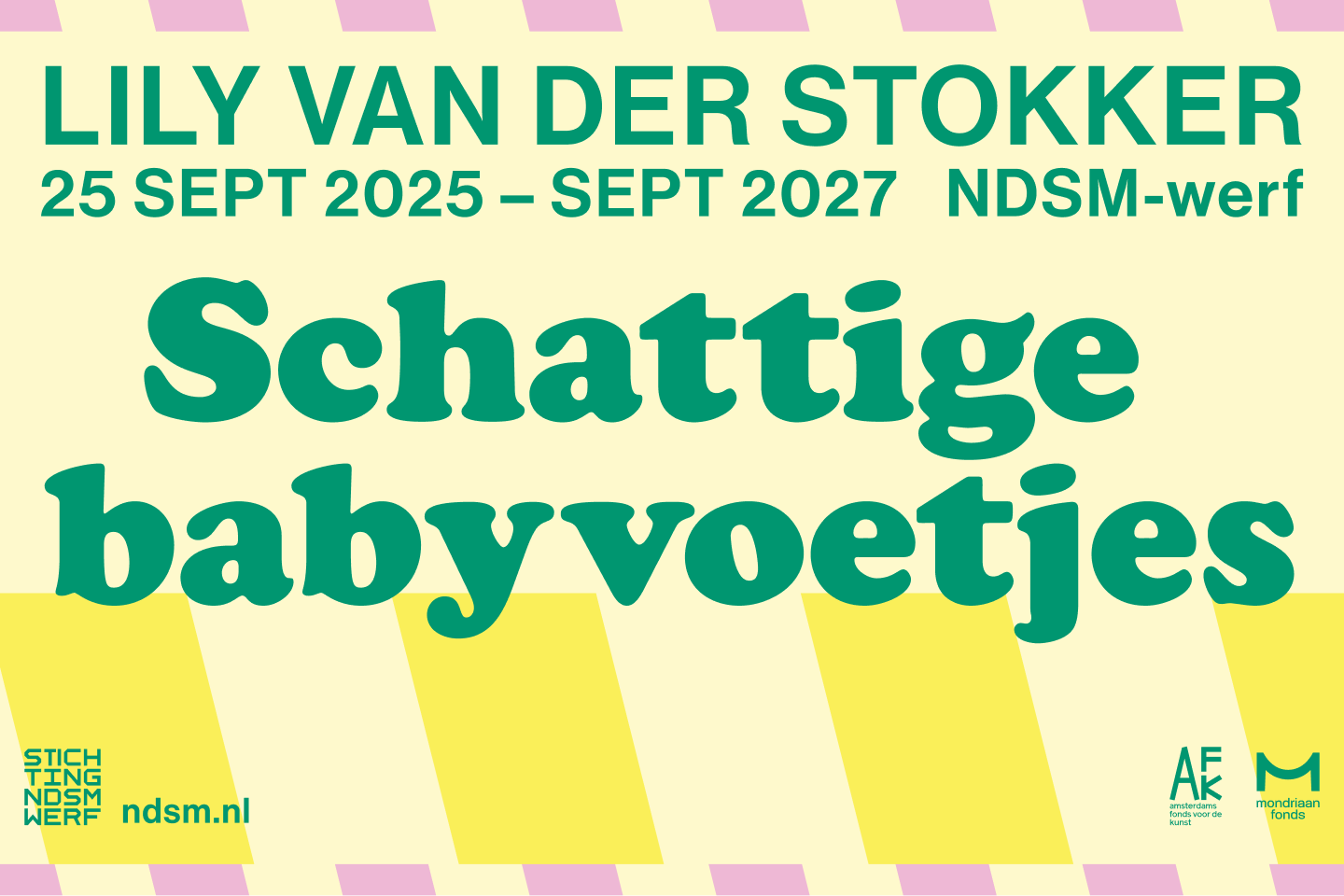CUTE BABY FEET
Lily van der Stokker
2026
.jpg)
Art programming by Stichting NDSM-werf

Schattige babyvoetjes ( Cute baby feet) will be on display at the NDSM-wharf from September 26, 2025 and will remain visible at the head of the industrial Y slope for two years. Artist's new text work Lily van der Stokker, specially developed for NDSM, provides a gentle and critical counterbalance to the raw character of the former shipyard, dominated by male makers.
The light green text statement Schattige babyvoetjes connects this historic heritage location — once a place of heavy work and mostly male work — with themes around the private domain, parenting and gender. “I put the homey on a pedestal,” says Van der Stokker. The chosen words, derived from parenting jargon, act as a subtle cultural provocation in an environment where graffiti and monumental marine heritage set the tone. The work invites visitors to look at public space with new eyes.
The NDSM-wharf— a former shipbuilding site that now serves as a creative incubator in the middle of a rapidly changing urban area — stands Schattige babyvoetjes symbol for the encounter between the personal and the public. The work contrasts provocatively with both the industrial environment and the graffiti in the field, making a powerful statement about the visibility of domestic and feminine themes in public space.
About Lily van der Stokker
Lily van der Stokker (1954) is known for her monumental, colorful murals and drawings that focus on everyday themes such as household, kindness and old age. With fresh, fluorescent colors and seemingly light texts such as Dank je lieve schat and Best mooi weer vandaag she has been challenging traditional views on art and aesthetics for over thirty years.
With Schattige babyvoetjes Van der Stokker joins her long-term artistic practice, in which personal themes — friendship and family, beauty and ugliness, kitchen cleaning, illness and health — are used as a window into broader social issues. Her work questions gender norms and the naturalness of masculine aesthetics in public space, offering a poetic but sharp look at who and what should be visible in our streetscape.
Schattige babyvoetjes made possible in part by the Amsterdam Fund for the Arts and the Mondriaan Fund.